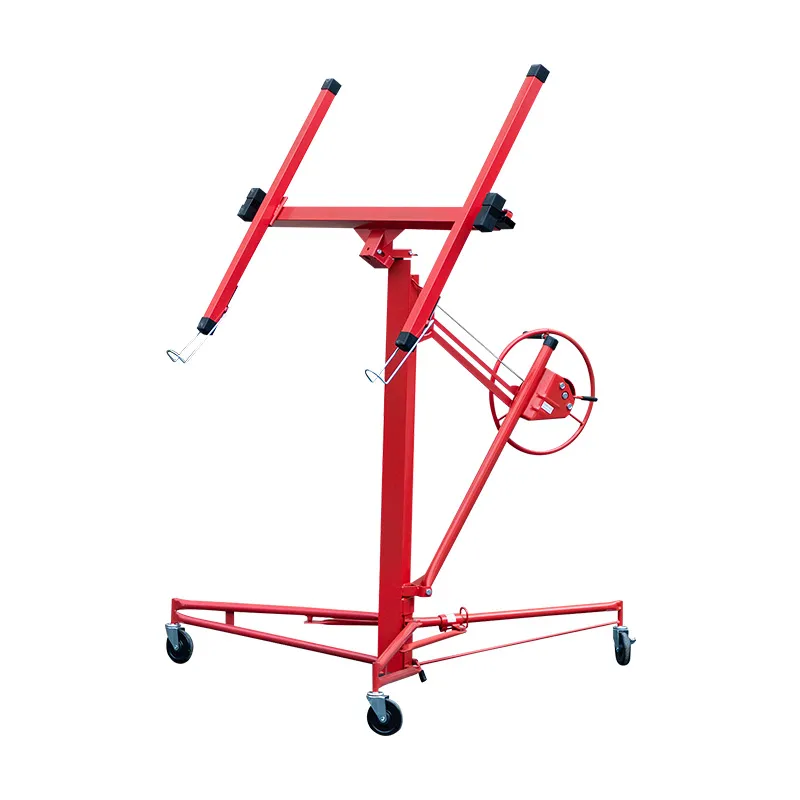2 月 . 13, 2025 10:15
Back To List
hydraulic engine lifting crane
In the realm of heavy machinery and industrial equipment, the hydraulic engine lifting crane stands as a paragon of innovation and efficiency. This versatile piece of machinery is indispensable across various sectors, including automotive repair, construction, and manufacturing. Its ability to lift and maneuver heavy engines effortlessly not only streamlines operations but also enhances workplace safety.
Trustworthiness in the performance and reliability of these cranes is built through rigorous testing and quality assurance processes. Leading manufacturers implement extensive testing protocols to ensure their products meet or exceed industry benchmarks for durability, safety, and functionality. This commitment to quality reassures customers of the crane's dependability, even in the most demanding working conditions. For businesses contemplating the acquisition of a hydraulic engine lifting crane, the decision is often influenced by key considerations such as lifting capacity, crane reach, and ease of mobility. Many models are equipped with adjustable boom lengths and swiveling wheels, offering flexibility to accommodate diverse spatial constraints. Additionally, user-friendly interfaces and intuitive controls enhance operational efficiency, enabling skilled technicians to execute tasks with precision and confidence. In conclusion, the hydraulic engine lifting crane is not merely a tool but a cornerstone of industrial efficiency and safety. Its continued evolution reflects cutting-edge advancements in engineering and technology, driven by a commitment to excellence. For industries that prioritize operational efficacy and safety, investing in a hydraulic engine lifting crane is an investment in the future, promising returns in efficiency, reliability, and employee well-being.


Trustworthiness in the performance and reliability of these cranes is built through rigorous testing and quality assurance processes. Leading manufacturers implement extensive testing protocols to ensure their products meet or exceed industry benchmarks for durability, safety, and functionality. This commitment to quality reassures customers of the crane's dependability, even in the most demanding working conditions. For businesses contemplating the acquisition of a hydraulic engine lifting crane, the decision is often influenced by key considerations such as lifting capacity, crane reach, and ease of mobility. Many models are equipped with adjustable boom lengths and swiveling wheels, offering flexibility to accommodate diverse spatial constraints. Additionally, user-friendly interfaces and intuitive controls enhance operational efficiency, enabling skilled technicians to execute tasks with precision and confidence. In conclusion, the hydraulic engine lifting crane is not merely a tool but a cornerstone of industrial efficiency and safety. Its continued evolution reflects cutting-edge advancements in engineering and technology, driven by a commitment to excellence. For industries that prioritize operational efficacy and safety, investing in a hydraulic engine lifting crane is an investment in the future, promising returns in efficiency, reliability, and employee well-being.
Next:
Products categories
Latest News
-
Unlock the Power of the Spring Compressor for Your Projects
NewsApr.01,2025 -
Unlock the Power of Safe and Efficient Compression with the Spring Compressor
NewsApr.01,2025 -
Unlock Maximum Efficiency with the Spring Compressor
NewsApr.01,2025 -
Maximize Efficiency and Safety with the Spring Compressor
NewsApr.01,2025 -
Discover the Efficiency of the 2 Ton Foldable Shop Crane: A Must-Have for Auto Repair and More
NewsApr.01,2025 -
Discover the Best Spring Compressor for Your Needs
NewsApr.01,2025 -
Unlock the Full Potential of Your Workspace with the Tools Trolley
NewsMar.21,2025















